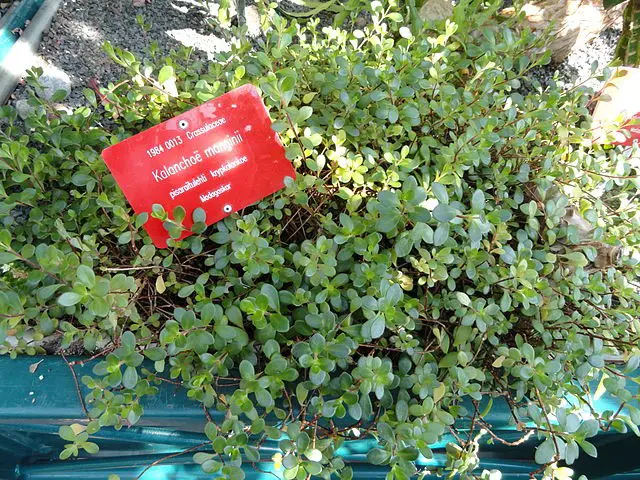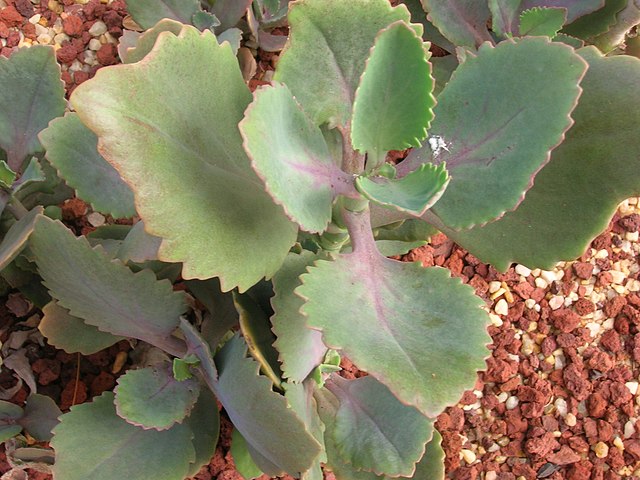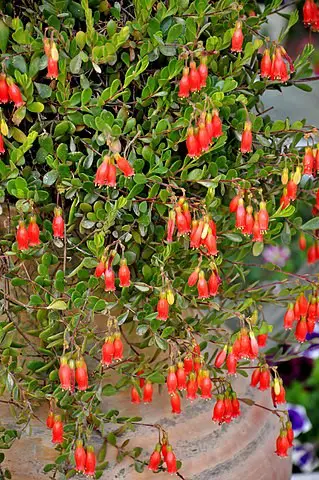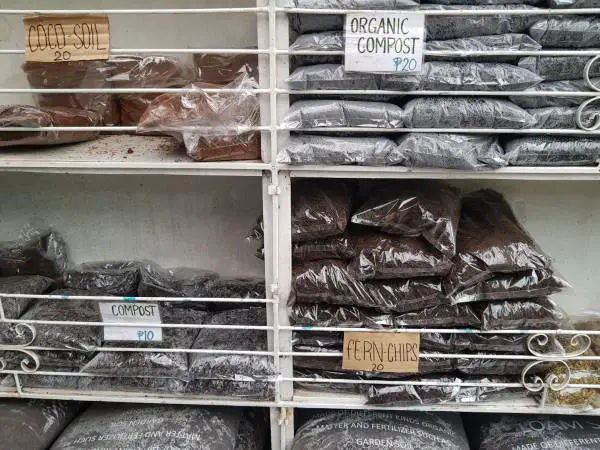I am excited to share my knowledge about cultivating the Kalanchoe Manginii, a stunning succulent plant that originates from Madagascar. This article will provide you with information about its background and global distribution, its physical appearance, as well as how to care for it, propagate it, prune and maintain it, and prevent pests and diseases.
Origin and Global Distribution
Mangin’s Kalanchoe, scientifically known as Kalanchoe Manginii, belongs to the family Crassulaceae and is endemic to Madagascar, where it thrives in rocky areas and dry forests. However, due to its beauty as an ornamental plant, it has spread to other parts of the world, including Asia, Europe, and the United States.
Physical Appearance
Kalanchoe Manginii is a petite succulent plant that typically grows up to six inches tall and eight inches wide. Its leaves are gray-green in color with reddish-brown borders and a waxy coating that provides a powdery texture. The leaves grow opposite each other in rosette formation. In late winter or early spring, the plant produces small pinkish-purple star-shaped flowers on long, slender stems.
How to Care for Kalanchoe Manginii
Lighting and Location Requirements
Kalanchoe Manginii thrives in bright indirect light and can tolerate a few hours of direct sunlight in the morning or late afternoon. It is an ideal indoor plant, but it can also thrive outdoors in warm climates. For indoor plants, place them near a south or west-facing window where they can get adequate sunlight.
Temperature and Humidity Requirements
Kalanchoe Manginii prefers temperatures between 60°F and 75°F. It can withstand cooler temperatures, but it needs to be protected from frost and extreme heat. It is not fussy about humidity levels and can do well in dry environments.
Watering Requirements
Kalanchoe Manginii is a drought-tolerant plant that requires minimal watering. It is essential to let the soil dry out completely between watering to avoid overwatering, which can lead to root rot. To determine if the soil is dry, insert your finger about an inch into the soil. If it feels dry, it is time to water your plant. Water the soil directly, taking care not to get water on the leaves or stem.
Soil or Potting Mix Kalanchoe Manginii prefers well-draining soil that is rich in nutrients. A cactus or succulent potting mix is the ideal choice for this plant. It is crucial to use a pot with drainage holes to prevent waterlogging.
When to Repot
Kalanchoe Manginii does not require frequent repotting and can thrive in the same pot for several years. However, if the plant has outgrown its current pot or the soil has become compacted, it may be time to repot. The best time to repot is in the spring or summer during the growing season.
Fertilization: Kalanchoe Manginii does not require frequent fertilization, but it can benefit from occasional feeding. Once a month during the growing season, use a balanced, water-soluble fertilizer diluted to half strength.
Propagation Kalanchoe Manginii
Propagation Kalanchoe Manginii is easy to propagate from stem or leaf cuttings. Take a stem or leaf cutting and allow it to callus over for a few days. Plant the cutting in well-draining potting mix and water sparingly. Keep the cutting in a warm, bright location, but away from direct sunlight until it develops roots. Here are the steps for successful propagation:
- Select a healthy stem or leaf from the parent plant.
- Use a sharp, clean knife or scissors to make a clean cut, ensuring that the cutting is at least 3-4 inches long.
- Place the cutting in a warm, dry, and shaded area to allow it to callus over for a few days.
- Once the cutting has callused over, plant it in well-draining soil or a succulent potting mix.
- Water the cutting sparingly and keep it in a warm, bright location with indirect sunlight.
- The cutting should develop roots within a few weeks, at which point it can be transplanted into a larger pot or outdoors if desired.
Pruning and Maintenance
Kalanchoe Manginii requires minimal maintenance, but occasional pruning can help promote bushier growth and remove any dead or damaged leaves. Here are some tips for pruning and maintenance:
- Use clean, sharp scissors or pruning shears to make a clean cut just above a leaf node when pruning.
- Prune back any leggy or spindly growth to promote bushier growth.
- Remove any dead or damaged leaves as soon as possible to prevent the spread of disease.
- Check the plant regularly for signs of pest infestation or disease and treat as needed.
Insect Pests and Diseases
Kalanchoe Manginii is relatively pest and disease resistant, but it can be susceptible to mealybugs and spider mites. Regular inspection and treatment with neem oil or insecticidal soap can help prevent infestations. Overwatering can also lead to root rot and other fungal diseases, so it is important to let the soil dry out between watering.
Blooming Period
Kalanchoe Manginii typically blooms in late winter or early spring, producing small, star-shaped, pinkish-purple flowers on long, slender stems. The blooming period can last for several weeks, adding a beautiful touch of color to your indoor or outdoor space.
In conclusion, growing Kalanchoe Manginii is relatively easy, making it an excellent choice for both novice and experienced gardeners. With proper care and maintenance, this succulent can add a touch of beauty and elegance to your home or garden.
Featured Photo Credit: Daderot




